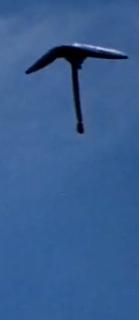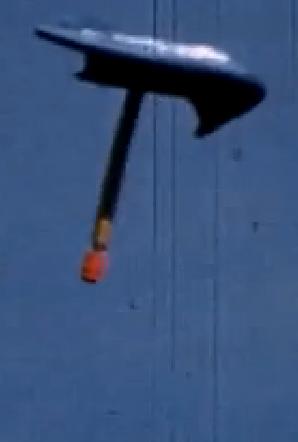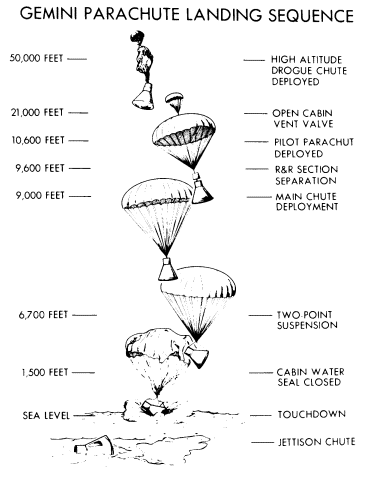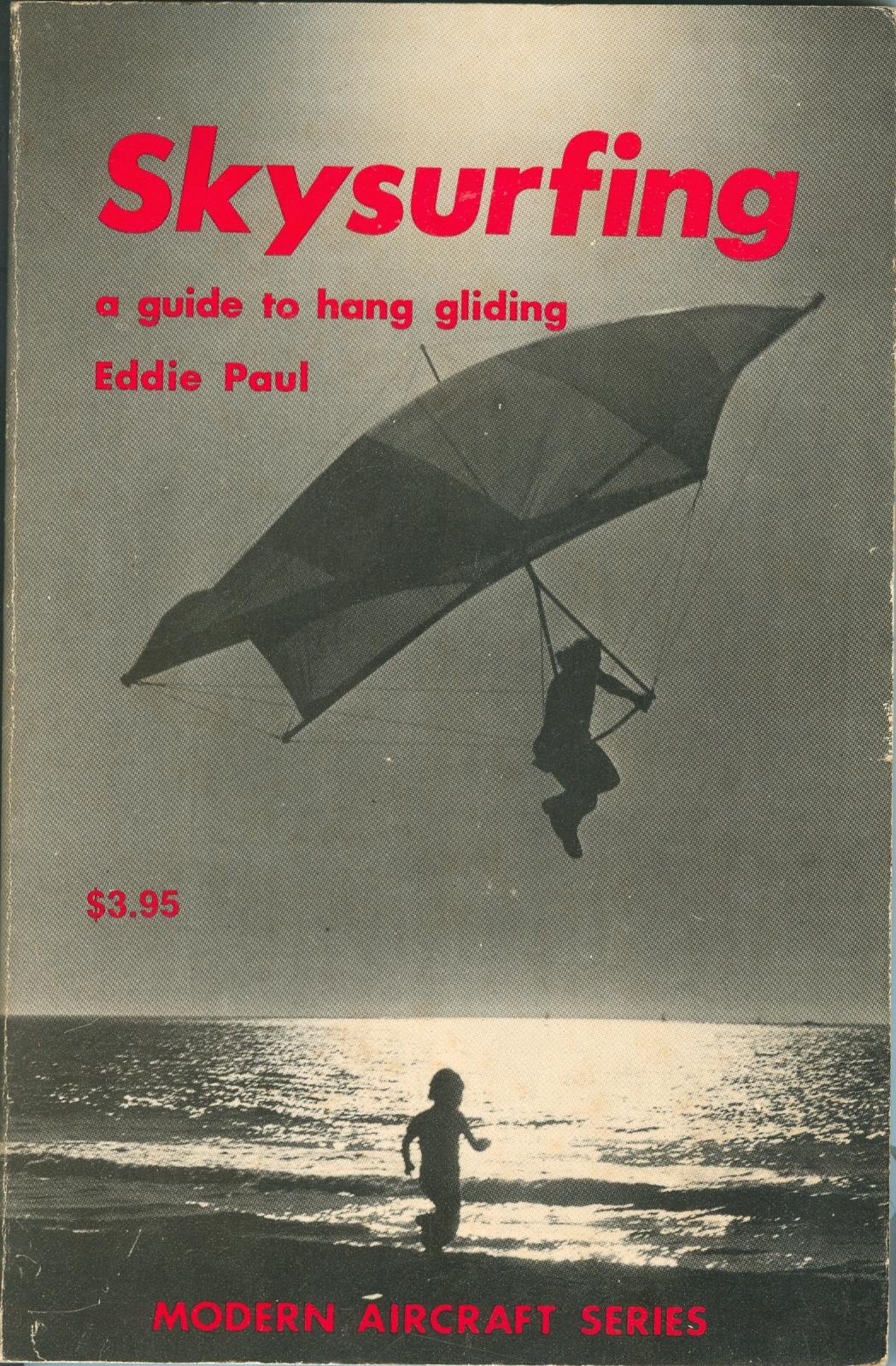|
LIFT
October 2011
See also:
Page 2,
Page
3,
Page 4 Son
sent this to me this morning, October 18th Crestline to Big Bear - Reloaded! by NMErider
|
||
|
Conceptual HG Harness Computer Graphics Design Videos
&
&
One step closer to the actual fabrication. This the third prototype is
designed
to be used in conjuncture with a paramotor harness. This harness will
permit
pilots to safely take off on foot & land on wheels, bringing the
joy of flying fast Hang Gliders,
without worrying about landing. The supine position will allow for
fatigue free long flights
& on ground handling the glider's weight will be taken up by the
pilot's shoulders
rather than his arms. Also there are plans for a motorised version.
submitted by Neil
Larson
|
||
|
NOT PARAGLIDERS !
Hot Off YouTube
2011 Korean Open
submitted by Neil Larson
|
||
|
Recalling Bob Wills: motocross jump with hang glider |
||
|
Body found,
Thursday, October 20, 2011.
Condolences to his family and friends. |
||
|
Clubs' and associations' members: |
||
|
October 24th, 2011
Festivities Commemorate 100th Anniversary of
American Inventor's
Historic Record Breaking Soaring Flight (9 minutes!)
-*reference link below -
Details events to honor the 100th Anniversary
of Orville Wright's Flights
soaring aloft over Kitty Hawk, N.C.
Soaring returns to Kitty Hawk to mark centennial
submitted by Neil Larson
|
||
|
||
|
Little Girl - Big Smiles! |
||
|
HG history
marker moving along. |
||
|
An interesting phenomenon, but what applications might
it be used for--apart from a party trick? Tony http://youtu.be/Ws6AAhTw7RA Quantum levitation More at: ASTC or wiki More sent by Tony: http://tinyurl.com/QuantumLevitationLIFT
|
||
|
Fugitive paraglider, fugitive bi-kite parakite.
|
||
|
||
| Posted in Oz Report. | ||
Mirror of http://history.nasa.gov/SP-4203/ch7-3.htmParaglider on the WaneWork on the reoriented paraglider program of May 1963 got off to a quick start. Before the end of the month, North American Aviation was working out techniques for launching a tow-test vehicle from the ground. This preliminary effort, which involved first a car-towed half-scale vehicle and then one towed by helicopter, was designed to show what the paraglider would do during towing and liftoff and to work out proper towing techniques, all this to prepare for that part of the new test program in which a pilot would fly the test vehicle from an altitude of 3,000 meters to a landing. NASA's Flight Research Center also conducted a series of tow tests, the whole effort being completed in mid-October 1963.21
If Gemini were forced to use parachutes instead of the trouble-plagued paraglider for landing the spacecraft, the landing sites would shift from land to sea. May 1963 also saw North American begin work on the other phase of the new test program, testing the deployment sequence with the full-scale test vehicle. Since this phase of testing called for the test vehicle to land by parachute, the first step was to qualify a parachute recovery system, one standard Gemini parachute backed up by a second. North American got off to a smooth start. Two drops of a small bomblike test vehicle on 22 May and 3 June showed that the system's two small stabilization parachutes worked. The contractor quickly began testing the full system on a boilerplate test vehicle. A minor malfunction marred the first drop on 24 June, but three good tests followed in July, with only one more needed to prove the system. What was to have been the final drop, on 30 July, brought a crucial setback. Both main and backup parachutes failed, and the boilerplate crashed.22 The company wanted to get on to the next phase of testing and argued that the failure could be safely ignored, partly because North American believed it knew how to correct the problem partly because further tests would require a new boilerplate and mean a delay in the program. The logic was sound enough, but GPO feared that, although the immediate problem might be easily corrected, its root cause - the instability of the vehicle - might produce other, and worse, problems. [146] GPO and North American agreed on two further drop tests. McDonnell furnished the new boilerplate, which North American, on the basis of spin-tunnel tests, modified to provide a more stable suspension system. That took time; over three months elapsed before the next drop, on 12 November 1963. Everything worked, and another test three weeks later confirmed the result; the parachute recovery system was at last qualified for full-scale vehicle deployment tests.23 Proving the parachute system was not the only source of delay. Design engineering inspections of the full-scale test vehicle on 1 August and the tow-test vehicle on 27 September produced the normal share of required changes. Wind tunnel tests of North American's first full-scale prototype wing at Ames Research Center in October yielded too little data and had to be repeated in early December. So it was late November before the contractor could deliver the first tow-test vehicle to Edwards Air Force Base to begin its manned program and mid-December before the two full-scale vehicles arrived.24 With almost two thirds of the time available under the new contract exhausted, North American had yet to begin the major flight-testing portion of the program. By the fall of 1963, the status of paraglider in Gemini was once more in jeopardy only partly because of North American's troubles. The inflated frame used in the paraglider design was being challenged by advocates of what seemed to be a viable alternative - an all-flexible gliding parachute, the so-called parasail. This device offered a lift-to-drag ratio ranging from 0.9 to 1.2, lower than paraglider's but still enough to provide worthwhile range and control. It was further handicapped by its relatively high rate of descent, which required landing rockets to cushion impact with the ground. But, overall, parasails matched conventional parachutes closely enough to promise a reasonably quick and relative cheap development of a reliable device for land landing. The gliding parachute had, in fact, competed with the inflated-frame paraglider design back in 1961, when the choice of a land-landing technique for what was then the Mercury Mark II project was being made. Although rejected for Mark II, the concept persisted as the subject of a modest research and development program at MSC.25 As paraglider faltered, parasail seemed more attractive. Project Gemini's new manager, Charles Mathews, was more receptive to parasail - or less committed to paraglider - than James Chamberlin had been. Supported by MSC Director Gilruth, Mathews called on GPO for another look at parasail. In April 1963, after the second half-scale test vehicle had crashed but before the future of the paraglider program was decided, he asked McDonnell to study changing Gemini's landing system from paraglider to parasail.26 While McDonnell pursued its study, MSC's Flight Operations Division [147] and Systems Evaluation Division continued testing a parasail system and pressing for its adoption. Paraglider still had highly vocal backers, however, who denied that its problems involved anything more than sequential details that would have to be ironed out for any recovery device, even conventional parachutes. Claiming that paraglider development had been known from the first to be a hard task, they objected to dropping it after so much of the work had already been done.27 The lines were drawn here they had been in 1961: Flight Operations Division and the Engineering and Development Directorate still opposed paraglider; most of the project office and the prospective pilots, supported by Flight Crew Operations, favored it. When McDonnell finished its study early in September 1963, the issue was carried to NASA Headquarters. The company's informed guess at the cost of a parasail and landing-rocket system for the Gemini spacecraft was $15.7 million, with a good chance to be ready for Spacecraft 7. When the parasail proposal was informally presented to NASA Headquarters on 6 September, it was rejected. Dropping paraglider on the verge of flight testing, leaving nothing to show for all the time, money, and effort already spent, was out of the question. The alternative, going ahead with parasail development as something to fall back on if paraglider failed, was ruled out for lack of funds to support both tasks at once.28 Although reprieved, the paraglider program did not come through unscathed. High-level talks between MSC and NASA Headquarters produced still another reorientation of the program.* The paraglider landing system program was stripped of all other objectives, leaving as its only goal proving paraglider's technical feasibility - which meant primarily showing that the wing could be inflated and deployed in flight to achieve a stable glide - with the accent on staying within the $16.1 million budgeted for fiscal year 1964. Until that goal had been met, there was to be no further work on a prototype system for Gemini, much less on production. Gilruth insisted on a clear understanding that paraglider might still fly on Gemini if the flight tests succeeded, that paraglider's future in Gemini had not been foreclosed.29 The implication of foreclosure was nonetheless there. Under orders from MSC, North American ceased its efforts to keep the full-scale test vehicle fitted with the latest Gemini equipment. MSC also directed McDonnell to stop all testing related to installing the paraglider, to design parachute versions of all Gemini spacecraft, and to plan on putting paraglider in the last three, the last two, or [148] only the last spacecraft. Nothing of paraglider was to remain in the spacecraft except the option to put everything back if the flight testing succeeded. Parachutes had, by late 1963, displaced paragliders as the planned means of recovery through the ninth mission. Paraglider landing was still listed for the last three Gemini flights, but some planners, SSD Commander Ben Funk among them, assumed paraglider would not be included in the tenth mission, either, "and probably will not be carried on any of the twelve flights."30 The very fact of paraglider's doubtful status had already begun to close off any real chance to fly in Gemini, whether it proved itself or not. A common feature of spacecraft development, and always a matter of concern, seems to be an innate tendency toward weight growth. Gemini was no exception. A complete paraglider landing system weighed almost 360 kilograms more than a conventional parachute recovery system. Once paraglider's place had been questioned, that difference was seen as a bonus and was simply used up. Experiments, for instance, began to encroach on as yet unfilled space allotted to paraglider, especially after January 1964, when the Manned Space Flight Experiments Board was formed. Gemini's planners were beginning to look on paraglider as an extra demand on the payload budget, already pushing the limits set by the booster. If paraglider were to be restored, some other mission objectives would have to give way.31 In other words, even if North American succeeded in showing that paraglider worked, that could no longer guarantee an attempt to fly the system in Gemini. Everything rested on the outcome of North American's upcoming effort to deploy the wing on the full-scale test vehicle in flight; although success could not ensure a place for paraglider, failure would surely bar it. * Major participants were MSC Director Gilruth, NASA Associate Administrator Seamans, George E. Mueller (who had recently replaced Brainerd Holmes as Deputy Associate Administrator for Manned Space Flight), and George Low (Mueller's Deputy Director for Programs). 21 Letter, George M. Low to James C. Elms, 13 April 1963; letter, Gilruth to Dir., Flight Research Center, "Participation of Flight Research Center in Paraglider Flight Test Program," GPO 00851, 6 May 1963; letter, Paul F. Bikle to MSC, Attn: Gemini-Paraglider Program Manager, "Paraglider Program status report, June 15, 1963, to July 15, 1963," 18 July 1963; Quarterly Status Report No. 7, p. 33; letter, Harrison A. Storms, Jr., to MSC, Attn: Stephen D. Armstrong, "Contract NAS 9-1484, Paraglider Landing System Research and Development Program, Transmittal of the Final Fee Settlement Proposal," 65MA3479, 18 March 1965, with enclosure, "A Final Fee Settlement Proposal for Contract NAS 9- 1484," 18 March 1965, p. V-111; letter, George W. Jeffs to MSC, Attn: Kline, "Contract NAS 9-1484, Paraglider Landing System Program, Monthly Progress Report No. 5 (September 1963)," 63MA 14952, 16 Oct. 1963, p. 4; letter, Jeffs to MSC, Attn: Kline, "Contract NAS 9-1484, Paraglider Landing System Program, Monthly Progress Report No. 6 (October 1963)," 63MA16325, 15 Nov. 1963, p. 3; memo, Kenneth F. Hecht to MSC Historical Office, "Comments on Chapter 6: The Nadir," 22 Sept. 1970. 22 See chapter V, pp. 98-99; letter, Jeffs to MSC, Attn: Kline, "Contract NAS 9-1484, Paraglider Landing System Program, Monthly Progress Report No. 1 (May 1963)," 63MA8801, 15 June 1963, p. 2; Weekly Activity Report, 2-8 June 1963, p. 2; letter, Jeffs to MSC, Attn: Kline, "Contract NAS 9-1484, Paraglider Landing System Program, Monthly Progress Report No. 2 (June 1963)." 63 MA10508, 19 July 1963, pp. 2-4; Weekly Activity Report, 23-29 June 1963, pp. 1-2; Consolidated Activity Report, 16 June - 20 July 1963, pp. 87-88; letter, Jeffs to MSC, Attn: Kline, "Contract NAS 9-1484, Paraglider Landing System Program, Monthly Progress Report No. 3 (July 1963)," 63MA12060, 15 Aug. 1963, p. 1; Mathews, activity report, 28 July-3 Aug. 1963, p. 1; "GPO Information for Management Council Meeting," prepared for meeting of 24 Sept. 1963; Hecht memo, 22 Sept. 1970. 23 TWX, R. S. Maynard to MSC for Kline, MA24858, 30 Aug. 1963; letter, Jeffs to MSC, Attn: Kline, "Contract NAS 9-1484, Paraglider Landing System Program, Monthly Progress Report No. 4 (August 1963)," 63MA12926, 13 Sept. 1963, p. 1; Consolidated Activity Report, 18 Aug. - 21 Sept. 1963, p. 79; Jeffs letter, 63MA16325, 15 Nov. 1963, p. 1; "Consolidated Activity Report, 20 Oct. - 16 Nov. 1963," pp. 20-21; Quarterly Status Report No. 7, p. 32; letter, Jeffs to MSC, Attn: Kline, "Contract NAS 9-1484, Paraglider Landing System Program, Monthly Progress Report No.7 (November 1963)," 63MA16756, 13 Dec. 1963, pp. 1-2; Weekly Activity Report, 1-7 Dec. 1963, p. 1; letter, Jeffs to MSC, Attn: Kline, "Contract NAS 9-1484, Paraglider Landing System Program, Monthly Progress Report No.8 (December 1963)," 64MA632, 13 Jan. 1964, p. 2; Quarterly Status Report No. 8, p. 25; Hecht memo, 22 Sept. 1970. 24 Jeffs letter, 63MA12926, 13 Sept. 1963, p. 1; Weekly Activity Report, 28 July-3 Aug. 1963, p. 3; Jeffs letter, 63MA14952, 16 Oct. 1963, p. 1; Quarterly Status Report No. 7, p. 33; Weekly Activity Report, 27 Oct. - 2 Nov. 1963, p. 1; Jeffs letter, 63MA16756, 13 Dec. 1963, p. 6; Jeffs letter, 64MA632, 13 Jan. 1964, p. 1. 25 "Preliminary Project Development Plan for a Controllable Parachute-Retrorocket Landing System," STG, 21 June 1961; U.S. Congress, House, Committee on Science and Astronautics, Astronautical and Aeronautical Events of 1962: Report, 88th Cong., 1st sess., 12 June 1963, p. 256; Zavasky, "Minutes of Senior Staff Meeting, March 22, 1963," p. 2; Consolidated Monthly Activity Report, 24 Feb. - 23 March 1963, p. 39. 26 André J. Meyer, Jr., notes on GPO staff meeting, 9 May 1963, p. 2; TWX, John Y. Brown to MSC, Attn: Mathews, "Contract NAS 9-170, Gemini, Study of Incorporation of Parasail," 16-DAH-2582, 26 May 1963; memo, Mathews to Wilbur H. Gray, "Information and Equipment Needed for Parasail Program," GPO-03044-A, 8 Aug. 1963. 27 Memo, Maxime A. Faget to dist., "Parasail - Landing Rocket Program," 4 March 1963, with enclosure, "Parasail - Landing Rocket Program Description"; Consolidated Activity Report, 19 May - 15 June 1963, p. 47; memo, Kraft to Chief, Systems Evaluation and Development Div., Attn: John W. Kiker, "Status of Pilot Visualization Program as of June 1, 1963," 17 June 1963; Consolidated Activity Report, 18 Aug. - 21 Sept. 1963, p. 59; Quarterly Status Report No. 6, pp. 21-22; memo, Kiker to GPO, Attn: Mathews, "Development status of the Para-sail - landing rocket," 21 Oct. 1963, with enclosures; memo, Warren J. North and Donald K. Slayton to Dir., "Continuation of paraglider effort," 3 Sept. 1963. 28 TWX, Brown to MSC, Attn: Mathews, "Contract NAS 9-170, Gemini, Budgetary Estimate for Production Incorporation of Parasail," 16-DAH-3393, 5 Sept. 1963; Zavasky, "Senior Staff Meeting, September 13, 1963," p. 6; Quarterly Status Report No. 6, p. 22. 29 Memo, Low to MSC, Attn: Elms, "Paraglider development program," M-C S 1312-503, 3 Oct. 1963; letter, Gilruth to NASA Hq., Attn: Low, "Realinement [sic] of Gemini Paraglider Program," GPO-01076-M, 16 Oct. 1963; letter, Low to MSC, Attn: Gilruth, "Gemini Paraglider Program," M-C S 1312-701, 30 Oct. 1963. 30 "A Final Fee Settlement Proposal," pp. III-1, V-36; memo, Wilburne F. Hoyler et al. to Actg. Mgr., GPO, "Paraglider Reorientation with the Gemini Program," 14 Oct. 1963; Low memo, M-C S 1312-503, 3 Oct.1963; Quarterly Status Report No. 8, p. 58; letter, Funk to Gilruth, "Evaluation of the Paraglider," 29 Nov. 1963. 31 Purser, "Management Panel Meeting, November 13, 1963," p. 5; "Abstract of Meetings of Gemini Launch Vehicle Panels and Coordination Committee, January 9-10, 1964," 20 Jan. 1964; memo, John A. Edwards to Dep. Dir., Gemini Program, "Gemini Water Landings," 18 Feb.1964; Purser, "Minutes of Project Gemini Management Panel Meeting. . . , February 7, 1964," pp. 6, 7; letter, Holmes to Gilruth, 23 Aug.1963; memo, Verne C. Fryklund to Dir., Office of Space Sciences, "Manned Space Flight Experiments Board," 28 Oct. 1963; memo, Willis B. Foster to Chief, Lunar and Planetary Br., "Establishment of Manned Space Flight Experiments Board," 9 Jan. 1964; NASA Management Instruction M 9000.002, "Establishment of a Manned Space Flight Experiments Board," Coordination Draft #6, 14 Jan. 1964; letter, Schneider to Mathews, 24 Jan. 1964; Hecht, telephone interview, 23 Jan. 1973. |
||
| David T. Barish Glide Wing filed Feb 27, 1967 | ||
|
Oct. 15, 1965: David Barish flew his
kite-glide wing 200 feet off a slope. He was the moving-falling resistive
anchor during the free flight hanging from the wing by a tether set; he
became a hang glider using long kite lines to his glide wing---which wing
he patented. He became an essential element of a kite moving relative to the air as kites do. ========= http://2e5.com/kite/barish/ ========== http://www.laboratoridenvol.com/sailwing.jpg |
||
| Thomas H. Purcell, Jr. Flight Dynamics (pres: Thomas H Purcell Jr.), Raleigh NC Built flexible-wing glider. Perhaps 1961. Details are invited. Skysurfer Magazine of May/June 1973, page 9, published by the owner of Aeronautical Publishers, shows Purcell with a wing that holds the mechanical inventions embedded also in the Fleep and the wing of the team headed by engineer Charles Richards. Thomas H. Purcell Jr. died Oct. 13, 2007, at UNC Hospitals in Chapel Hill, N.C Patent. filed 1969. [[ED: Francis Rogallo flew with Purcell in one of these craft.]] | ||
| http://www.google.com/patents/about?id=omEYAAAAEBAJ&dq=5884863 Comment: D-tube LE as container? | ||
| Otto W. Neumark | ||
COMMENTARY
|
||
|
Stacked-wing paragliding control systems
... |
||
| Wolf Elber. Wing twist via torque tube to wing tip. | ||






